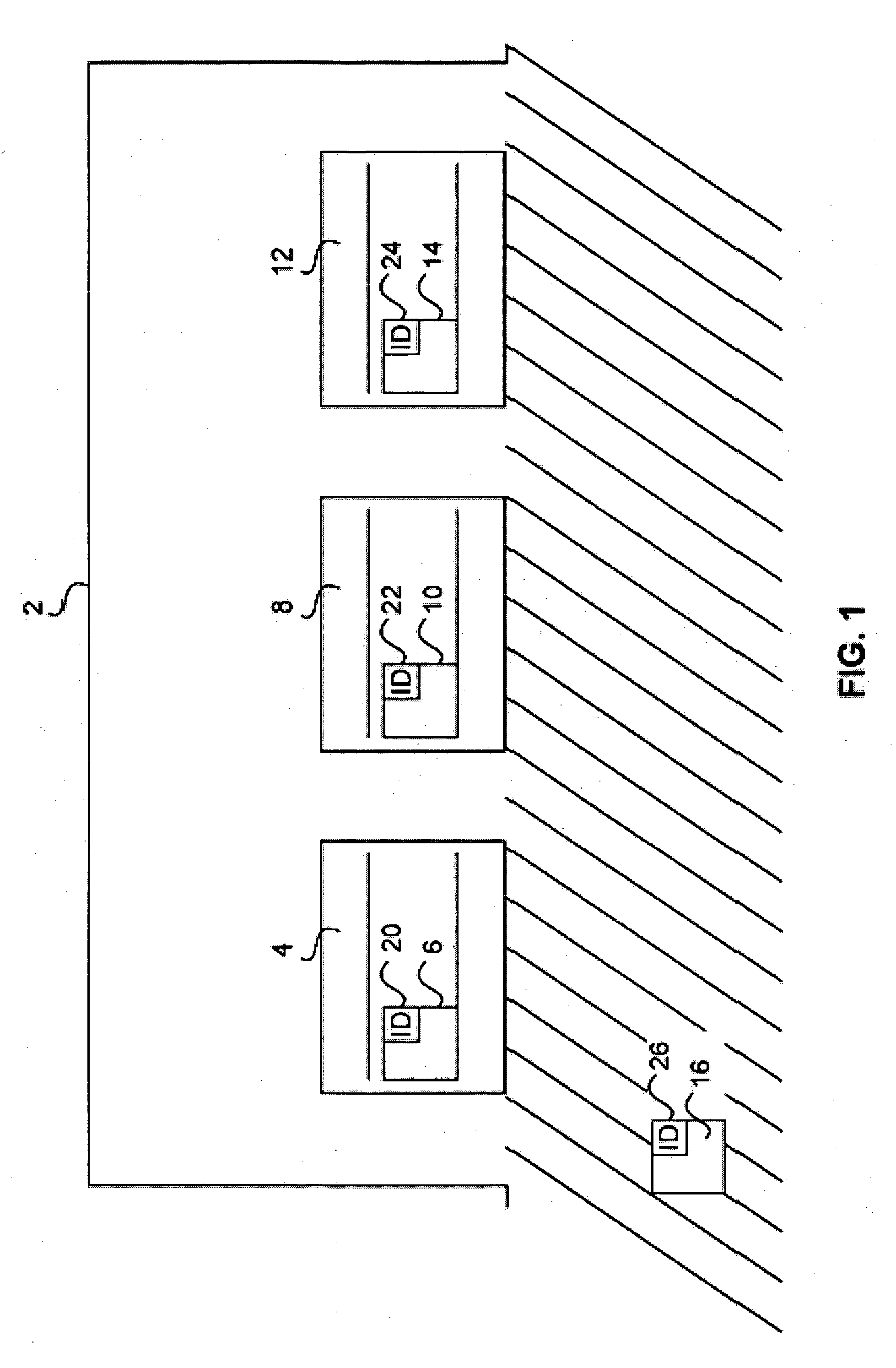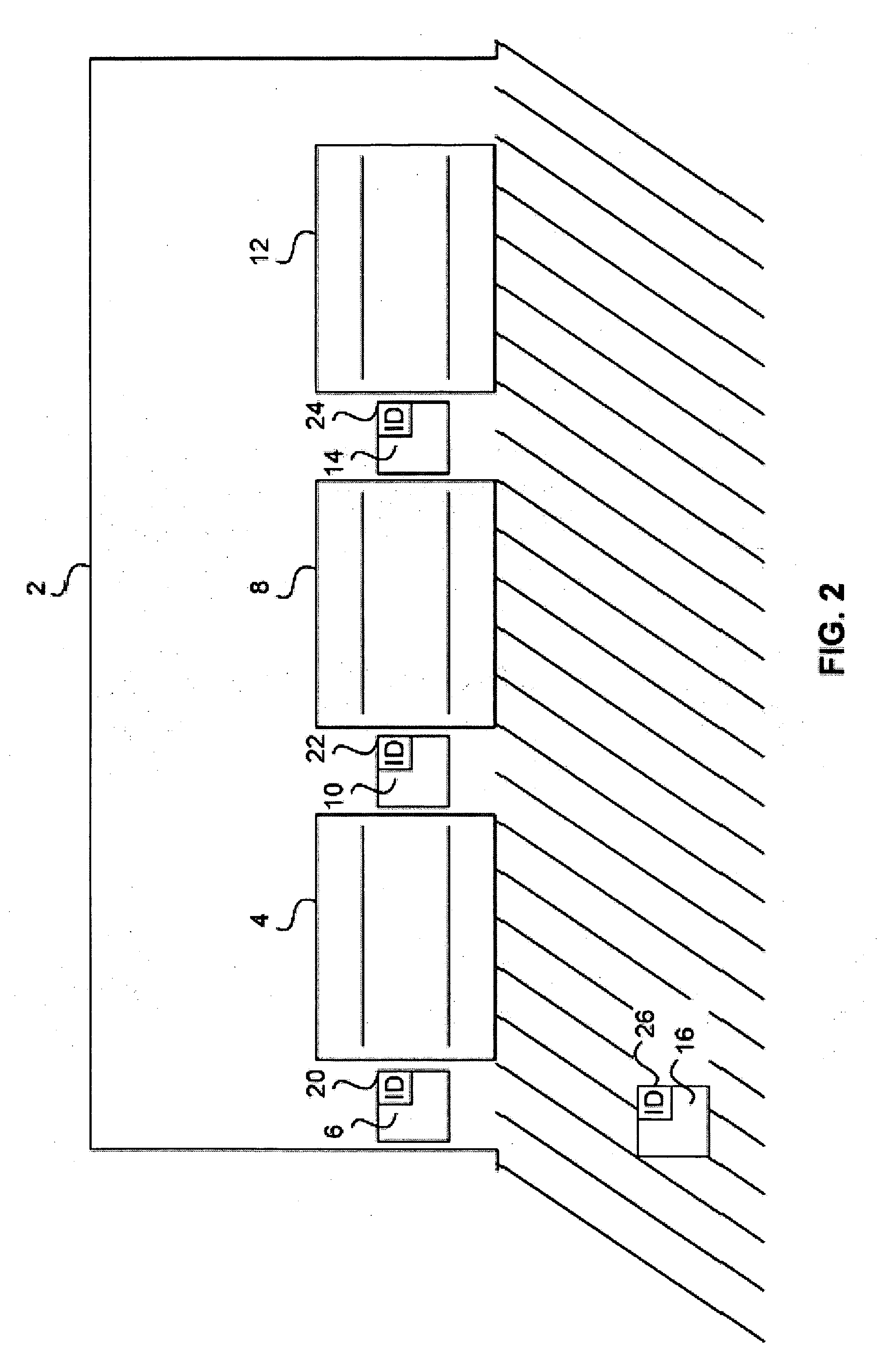Generic radio transmission network for door applications
- Summary
- Abstract
- Description
- Claims
- Application Information
AI Technical Summary
Benefits of technology
Problems solved by technology
Method used
Image
Examples
first embodiment
[0035] A first embodiment of the radio transmission network according to the present invention is described with reference to FIG. 1. FIG. 1 illustrates a system or radio transmission network where stationary transceivers are mounted on a plurality of respective doors.
[0036] In this example, as shown in FIG. 1, a building 2 comprises three doors 4, 8, 12. Stationary transceivers 6, 10, 14 are mounted on each of the three doors 4, 8, 12, respectively. Each of the stationary transceivers 6, 10, 14 incorporates identifiers 20, 22, 24, respectively. When a mobile transmitter 16 approaches the vicinity of door 4, door 4 opens automatically.
[0037] More specifically, a worker using a forklift (not shown) carries a hand-held mobile transceiver 16 or the mobile transceiver 16 is mounted on the forklift itself. Once the forklift carrying the mobile transceiver 16 is located at a predetermined distance away from the door 4, the mobile transceiver 16 triggers the stationary transceiver 6 loca...
second embodiment
[0041] A second embodiment of the radio transmission network according to the present invention is described with reference to FIG. 2. FIG. 2 illustrates a system or radio transmission network where the stationary transceivers are mounted next to the plurality of doors.
[0042] The reference numerals of FIG. 2 denote the same elements as in FIG. 1. The difference between FIGS. 1 and 2 is that the stationary transceivers 6, 10, 14 are located next to the doors 4, 8, 12, respectively (as in FIG. 2), for example, on a wall, instead of being mounted directly on the doors 4, 8, 12 (as in FIG. 1).
[0043] Again, for instance, if a forklift carrying the mobile transceiver 16 is located at a predetermined distance away from the door 4, the mobile transceiver 16 triggers the stationary transceiver 6 located next to the door 4. Once the stationary transceiver 6 receives a trigger signal, the door 4 automatically opens at a rapid speed in order to allow a worker on the forklift to enter through ...
PUM
 Login to View More
Login to View More Abstract
Description
Claims
Application Information
 Login to View More
Login to View More - R&D
- Intellectual Property
- Life Sciences
- Materials
- Tech Scout
- Unparalleled Data Quality
- Higher Quality Content
- 60% Fewer Hallucinations
Browse by: Latest US Patents, China's latest patents, Technical Efficacy Thesaurus, Application Domain, Technology Topic, Popular Technical Reports.
© 2025 PatSnap. All rights reserved.Legal|Privacy policy|Modern Slavery Act Transparency Statement|Sitemap|About US| Contact US: help@patsnap.com



